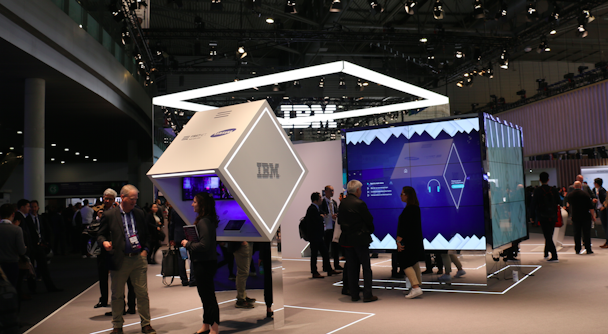Lack of right culture, the biggest hindrance to digital transformation says IBM iX
As technology evolves at a dizzying pace, choosing the right digital transformation initiative can be a challenge. But even more critical is that any digital transformation requires instilling a culture that supports that change, according to Sarah Bernuit, VP digital strategy and IBM iX Europe.

Lack of right culture, the biggest hindrance to digital transformation says IBM iX
Speaking to The Drum at The Mobile World Congress 2019 recently, Bernuit talked about what works best to drive successful digital transformation and what doesn’t. “The attitude [of businesses] towards digital transformation or any transformation is that it is a journey. We shouldn't forget that digital is a means to an end, and organisations should really use that catalyst of transformation to redefine that end.”
“And I believe one of the biggest hindrances to any digital transformation is mindset and culture . Leaders tend to focus on the technology, on the platforms: it is concrete and measurable. However to move towards the new type of enterprise, what we call the “Cognitive Enterprise” in IBM, leaders must focus also on Enterprise Agility and the Culture and Mindset required to enable it. The right culture and mindset progressively change behaviours.
“How do we change culture ? well if you look at how religions embedded their key principles to evangelize, it is pretty much the same. It is based on people, places and practices. People, “evangelist”, recruited, qualified and keen to convert more people; Places to crystalise the learning and inspire the people towards the purpose; and Practices, best in class curriculum and framework to show the path to reach the objective.
When it comes to people, that means a radical view of how you should train, recruit, incentivise people. Most of the companies in the last few years have been siloed and the organisational environment does not foster behaviours that encourages collaboration and shared values,” she explained.
Bernuit, who also spoke at the MWC 2019 about the reality of digital transformation, added that some of the key questions that organisations need to be asking themselves include: the job skills required in the new world; the types of roles that would change; the kind of leadership needed; what leaders are doing to prepare their workforce for digital transformation; and how automation and AI will impact the workforce, and indeed the workplace of the future.
Time for diversity. Time for collaboration
So, the question remains, how do companies shift to their desired culture to enable digital transformation?
“The survival of humanity is based on two things - competition and collaboration. We've over-emphasised the competition part, so now it's time to welcome in collaboration,” said Bernuit.
“In this new era of cross-functional teams it will also take a lot of emotional intelligence to create new things with shared value. It needs to go beyond ‘yourself’ and you need a new mind-set for this. That is what will influence culture.
What also needs to change is the place of work. According to her, workplace is a catalyst of change and can drive desired culture and elicit new behaviours. “You inspire people with places. A physical places can depict the purpose of your enterprise, the need for transformation. Our ancestors understood this very well. Why do you think we have so many beautiful churches in Europe ?.” she added. There is a reason, she said, many transformations stop short and eventually fail. As businesses fail to recognise that in order to foster and scale any kind of change there is a need to transform the existing systems, processes, and practices and even workplaces. Else, it would be almost difficult to introduce new behaviours in any organisation.
Demystify
The other trick is to make sure that the transformation process does not appear scary, and is easier to understand by everyone in an organisation. “If you say let’s embark on a digital transformation, let’s be agile, become a scrum master.. it sounds awful. We have to cut the lingo and start de-mystifying the process.”
Bernuit pointed to BT’s Project Da Vinci strategy for 2020, as an example. It is a roadmap to transform its IT organisation to be services-based and customer centric – a key change for a business that has historically over focused on platforms and solutions rather than on its customers. “Branding it as Da Vinci makes it so much more accessible, and it becomes easy to comprehend.”
The behaviours that allow for digital transformation come from a culture that represent a major shift from longstanding norms, she concluded.
Content created with:

IBM iX
IBM iX, your global business design partner.We work at the intersection of strategy, creativity and technology to help our clients digitally reinvent their businesses....
Find out more